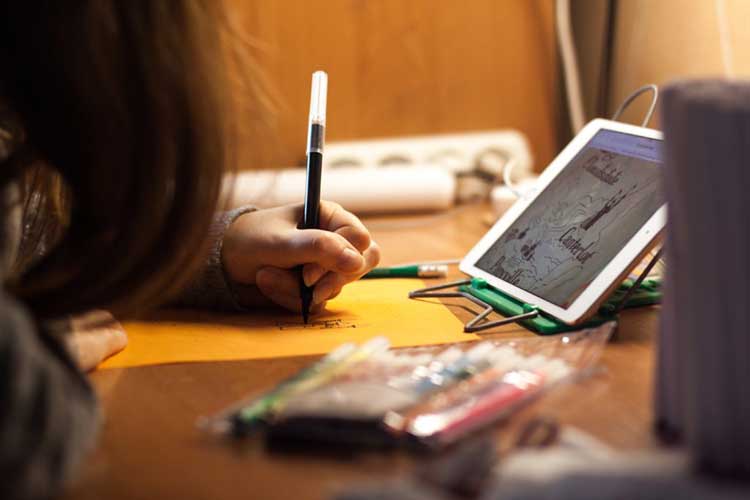Secure your Kid's Spot in our Writing Classes! Register here!

What we're talking about!
Check back often for updates!

Technology in classroom
In the first part of our evolving classroom series we saw how our child’s classroom is changing into a tech-enabled environment that is adopting new tools for learning, innovation and creativity.
In the past, we welcomed a desktop on the class teacher’s table, or a computer lab in every school, and made computer literacy part of every school’s curriculum. Technology’s insurmountable growth is now bringing in another wave of transformation in the classroom.
The future is heading towards open classrooms where desks and chairs are being replaced with beanbags and bouncy balls, whiteboards with LCD smart boards, and pen and paper with iPads and laptops.
Technology is helping the growth of experimental schools too, that are breaking the norm of awarding grades and scores to children, and creating classrooms based on their skills instead of age. Technology in education is aiding the growth of customized learning, where educators provide child-specific learning modules, ensuring the child learns from his inherent skills rather than rote memory.
As we see our child’s classroom metamorphosing into a robust learning environment, we must accept that technology is a gateway to success for the next generation. There has never been a more exciting time for education than now. We look at four technologies carving its way into K-12 classrooms of today.
Immersive Technologies
Roughly broken down into augmented, virtual and mixed reality, holography and telepresence, immersive technologies allow users to integrate virtual content with their physical environment thus diminishing the difference between a user’s real environment and that of virtual content. Demand for immersive learning tools are rising in K-12 schools because of this technology’s ability to offer blended reality that goes beyond the confines of a classroom. For example, VR allows students to take virtual field trips across the world, and participate in virtual dissection to get a comprehensive look inside a human body. This technology is fostering greater collaboration with peers in the classroom and allowing more project-based learning.
Cloud Computing
Cloud computing is helping take learning beyond brick-and-mortar schools, breaking the norm that a student and teacher need to be face-to-face in order for learning to happen. Information, mainly in the form of homework, class discussions and assignments are delivered consistently and securely over a cloud network. Digital libraries and Google Classroom are popular examples of cloud computing’s strong potential for teachers and students.
3D Printers
A powerful tool in discovery and learning, a 3D printer brings to life anything that a student can visualize, catapulting his spatial reasoning skills to the top. Preparing a model of a dinosaur for a science project or an object for show and tell, if the mind can conjure an image, the 3D printer can turn it into reality. Already an essential tool in many engineering and architecture schools across the globe, this engaging technology will be hugely beneficial for grade school students as well since it positions every student as an inventor and keeps learning exciting.
Game-based Learning/Gamification
Gamification of the classroom means creating fun, game-like scenario to achieve curriculum objectives. Digital games provide two important learning components to a student—collaboration and problem solving. Since digital games are highly interactive, they bridge the gap between learning and imagination, and increase the ability of a child to assimilate challenging concepts. Teachers are also using gamification, mainly in the form of learning apps like Duolingo, Socrative and PlayBrighter, to assess students —award them upon winning a game and provide constructive feedback when they don’t.
The question around technology and schools has changed from “should we use technology in the classrooms?” to “what kind of technology should we use in a K-12 classrooms?” And this is a crucial step in the right direction.
Sadly, the fate of “dog ate my homework” excuse seems to be up in the air (cloud).
Shikha Das Shankar is a freelance storyteller. Multitasking dragon slayer mom. Happy hiker. When not writing, she loves hiking with her favorite trio—the son, the daughter and the husband or cooking her favorite foods in her de-stressing zone, the kitchen.
Help your kids fall in love with reading!
Need a list of amazing books to get your kids inspired about writing their own stories?
Grab your free copy by completing the form.
We'll email you the ebook!